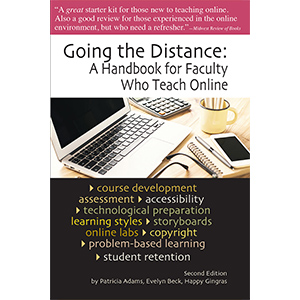Helping Students Think Critically (Part One)

 By Bruce A. Johnson, Ph.D., MBA
By Bruce A. Johnson, Ph.D., MBA
Why should an instructor care what their students are thinking? Students are expected to be involved in the process of learning and focused on meeting the assigned learning objectives. This means that they are required to have an ability to rationally think through their assignments and discussions, while creating knowledge, gaining new perspectives, and developing new skill sets. The challenge for students is looking beyond their current belief systems, knowledge, opinions, and ideas. This can be accomplished through the use of a formalized system of analysis known as critical thinking. The process of learning can be enhanced when students develop and apply critical thinking as it promotes meaningful classroom exchanges and improved cognitive development. In this first blog definitions will be considered and the process of critical thinking will be examined.
What is critical thinking?
When students begin to organize their thoughts they are using a logical thought process because it’s a structured way of thinking. The purpose of critical thinking is to extend the use of logic and reasoning into a method of examining beliefs systems. In his book Developing Critical Thinkers, Stephen Brookfield states that “critical thinking describes the process we use to uncover and check our assumptions.” Students often accept what they believe as facts, especially if those are long held beliefs. Critical thinking does more than ask students to consider what they think and instead challenges them to consider why they believe what they believe.
The Online Teaching Center has found that “a critical thinker is able to get past biases and view situations from different perspectives to ultimately improve his or her understanding of the world.” Critical thinking helps students develop a broader basis of diverse views by having an open mind and being receptive to other students’ contributions, opinions, ideas, and experiences. Within Dan Kurland’s website he discusses critical thinking and self-awareness, and states that “we are thinking critically when we weigh the influences of motives and biases.” Being able to accomplish this goal begins by making a determination of factors that influence thinking and then asking questions that search for facts, evidence, and logical conclusions.
Critical thinking has also been defined by The Critical Thinking Community as “the art of thinking about your thinking well you are thinking in order to make your thinking better, more clear, more accurate, or more defensible.” The purpose of developing a rational thought process is to help students develop clarity in their work and in their class discussions. Diane Halpern notes that “it is the kind of thinking involved in solving problems, formulating inferences, calculating likelihoods, and making decisions.” When students utilize sound logic and reasoning that is based upon facts, research, and informed opinions, they are likely to participate in class in a meaningful way and submit well-thought out assignments.
What does the process of critical thinking involve?
Critical thinking is an internalized process of self-reflection, examination, and questioning that causes a transition from lower-order thinking to higher-order thinking. When students are presented with information in class they are first passive participants in the learning process. If the learning activities do not require them to actively work with that information their cognitive abilities remain at a lower level. This would include memorizing and recalling information for an exam. Students can be encouraged to become active participants in the learning process when they working with information in a critically reflective manner, which develops higher-order cognitive skills and leads to the creation of new knowledge. The second blog in this series will continue this discussion and address methods that instructors can implement to help students develop critically reflective skills and promote their cognitive development.
About the Mentor: Dr. Bruce Johnson has had a life-long love of learning and throughout his entire career he has been involved in many forms of adult education; including teaching, training, human resource development, coaching, and mentoring. Dr. J has completed a master’s in Business Administration and a Ph.D. in the field of adult education, with an emphasis in adult learning within an online classroom environment. Presently Dr. J works as an online adjunct instructor, faculty developmental workshop facilitator, and faculty mentor.








